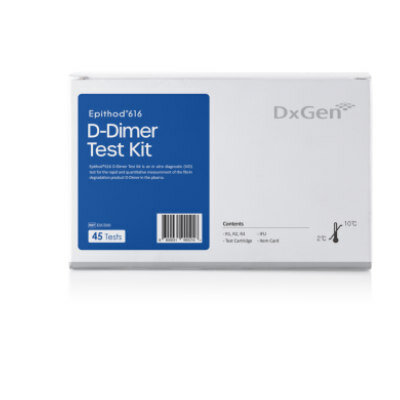Sound Waves Diagnose Blood-Related Diseases
By LabMedica International staff writers
Posted on 16 Jul 2013
A method has been developed that can rapidly quantify variations in the morphology of single red blood cells (RBCs) using light and sound. Posted on 16 Jul 2013
When irradiated with a laser pulse, an RBC absorbs the optical energy and emits an ultrasonic pressure wave called a photoacoustic wave, which contains distinctive features that can be used to identify the erythrocyte’s size.

Image: SASAM acoustic microscope (Photo courtesy of Kibero).
Biophysicists at Ryerson University (Toronto, ON, Canada) used a special photoacoustic microscope that detects sound. They were able to differentiate healthy red blood cells from irregularly shaped red blood cells with high confidence, using a very small sample size. Because each measurement takes only fractions of a second, the method could eventually be incorporated into an automated device for rapid characterization of red blood cells from a single drop of blood obtained in the clinic.
All measurements were completed using a photoacoustic microscope developed by Kibero (Saarbrücken, Germany). This is an Olympus IX81 inverted optical microscope (Tokyo, Japan) fitted with a transducer above the sample stage. Deviations from the regular biconcave shape of a red blood cell are a significant indicator of blood-related diseases, whether they result from genetic abnormalities, from infectious agents, or simply from a chemical imbalance.
As an example, malaria patients' red blood cells are irregularly swollen, while those of patients with sickle cell anemia or drepanocytosis take on a rigid, sickle shape. The scientists used a single wide-bandwidth transducer sensitive to frequencies between 100 MHz and 500 MHz, to differentiate healthy RBCs from irregularly shaped RBCs, such as echinocytes, spherocytes, and swollen RBCs, with high confidence using sample size of just 21 erythrocytes.
The authors concluded that the photoacoustic spectral methods are a first step toward an automated process for the detection of RBC abnormalities via morphological identification with good sensitivity. With some refinement, these methods could eventually be used in a clinical setting to help diagnose RBC pathology using just a single drop of blood. Michael Kolios, PhD, the senior author of the study said, “We plan to make specialized devices that will allow the detection of individual red blood cells and analyze the photoacoustic signals they produce to rapidly diagnose red blood cell pathologies.” The study was published on July 2, 2013, in the Biophysical Journal.
Related Links:
Ryerson University
Kibero
Olympus













